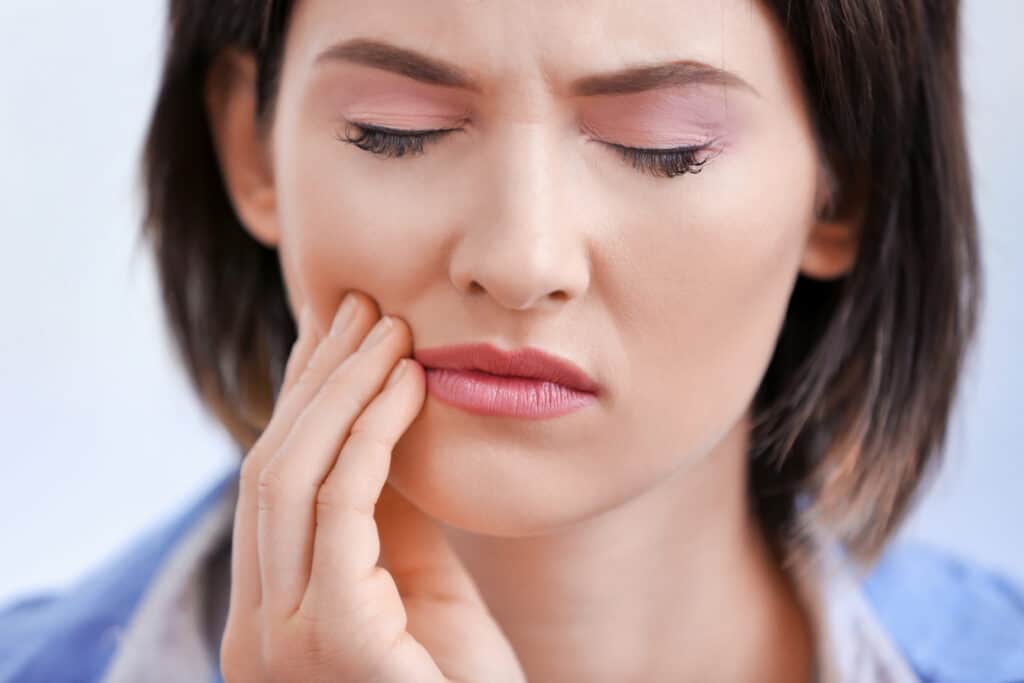
Do you have ear and jaw pain on one side of your head?
Are these pains disrupting your everyday life, making it hard to focus on what’s important?
If so, then this blog post is for you. In it, we explore the potential causes of both ear and jaw pain and the treatments that can help relieve your symptoms.
We also discuss how to recognize when more urgent medical attention may be necessary for this type of pain.
So, whether you have persistent or intermittent ear and jaw pain for a while or the symptoms are just starting, we’re here to help.
Although we must say that although it’s tempting to turn to the internet for answers when you have anxiety-inducing physical symptoms, it’s best to book an evaluation with a professional physical therapist or your MD to get an accurate diagnosis.
We can evaluate your symptoms and help you get to the root of the problem. Life is too short to spend it googling your symptoms and trying to treat yourself online.
More Blogs From RPM Physical Therapy:
Understand Workstation Ergonomics and Avoid Musculoskeletal Issues
What Causes Ear And Jaw Pain?
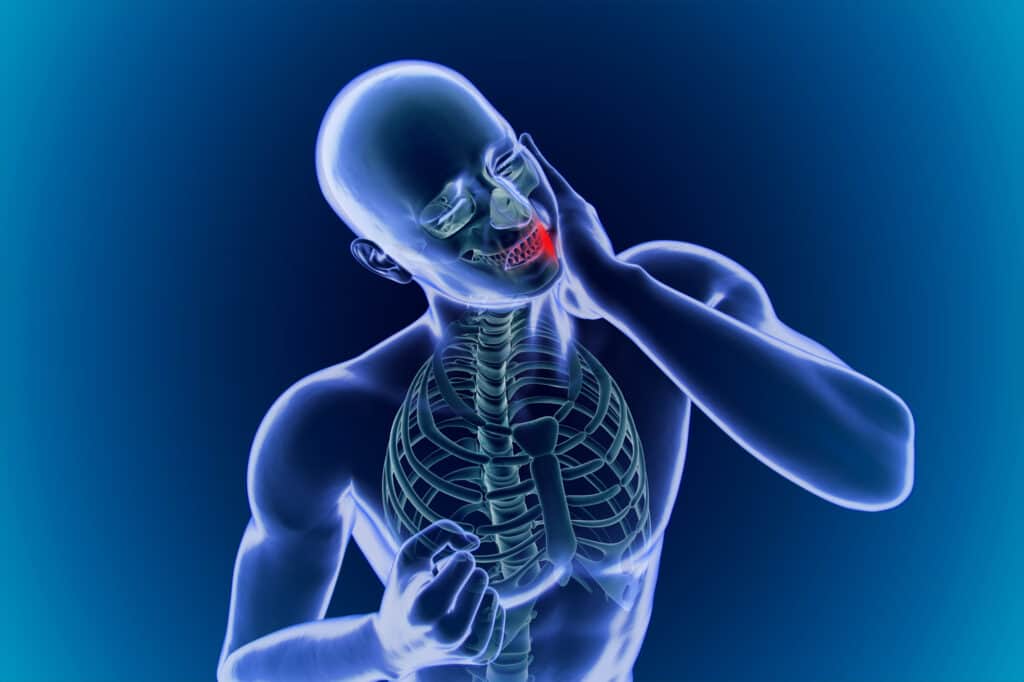
Ear and jaw pain can be really sore, that’s for sure. But what exactly is causing your discomfort?
You may have ear and jaw pain on one side of your head for various reasons, from a superficial ear infection to a more serious condition like temporomandibular joint (TMJ) disorder.
Some people may also get referred pain – when you feel pain in one area, but it’s caused by a problem in another part of the body.
Quite often, jaw pain is the indirect result of chronic neck and shoulder tension. But whatever the cause, it’s important to seek help if you are experiencing ear and jaw pain because it could be a sign of a more serious underlying issue.
It’s also a good idea to rule out dental problems. However, in lots of cases, ear and jaw pain on one side of the head is related to a condition known as Temporomandibular Dysfunction (TMD).
TMD is a common medical condition that can cause severe discomfort for adults and children. If left untreated, it can even result in headaches, neck pain, facial pain, and difficulty swallowing. Fortunately, though, there are effective treatments available for this condition.
Physical therapy is often recommended for ear and jaw pain associated with TMD – but how does it help alleviate these symptoms?
How Physical Therapy Can Help With Ear and Jaw Pain
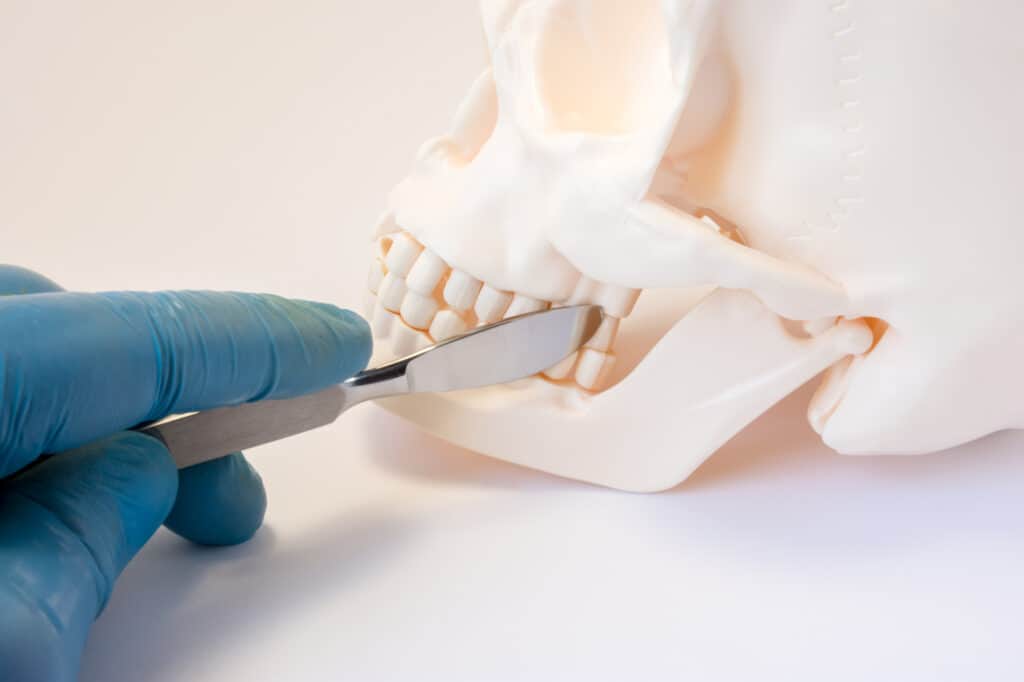
Physical therapy is a critical component of treating ear and jaw pain, and it can be immensely helpful. Why? Ear and jaw pain can be symptoms of various underlying conditions that may result in discomfort and limited neck and jaw mobility.
Physical therapy can be a really effective treatment option for addressing these issues. The benefits of treatment are numerous, including increased range of motion in the jaw and cervical spine (and the rest of the body), reduced inflammation, and improved circulation.
When inflammation sets in around the jaw and the temporomandibular joint, it can cause all sorts of problems – from pain and stiffness to insomnia. That’s where physical therapy comes in. It’s a game-changer.
We can help alleviate the pain and swelling by developing a personalized treatment plan that we tailor to your unique needs that uses various techniques like manual therapy, stretching, myofascial release, and therapeutic exercises to effectively reduce inflammation in the localized area.
It makes an incredible difference to TMJ symptoms and neck, jaw, and shoulder tension.
Using targeted exercises and stretches, we help alleviate pain and restore function in the affected areas. Physical therapy can also address contributing factors that may exacerbate the pain, such as poor posture or muscle imbalances.
But while many people think of physical therapy as consisting solely of exercises and stretches, the truth is that we can provide many additional treatments if we deem them necessary based on your symptoms.
For example, massage therapy can be a fantastic way to help soothe sore muscles and reduce inflammation around the temporomandibular joint.
Ultrasound therapy can also help to promote healing and reduce pain and stiffness. By tailoring your treatment plan to meet your specific needs and challenges, we help make sure that you have the best possible chance of making a full and speedy recovery.
With our guidance, you can find quick relief from ear and jaw pain and TMJ problems and regain your quality of life.
“What Else Can I Do?”
At-Home Exercises That Can Help With Ear And Jaw Pain
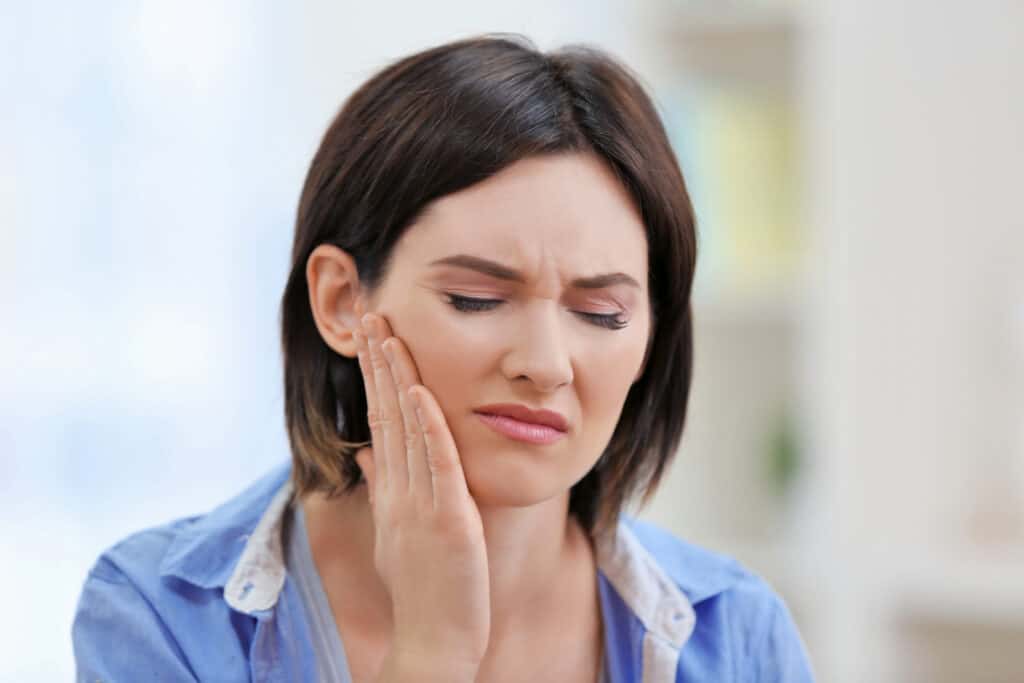
Everyone experiences pain differently. What works for one may not always be the best solution for another.
That’s why it’s important to take a holistic approach to healthcare that looks at all factors contributing to pain to find an effective solution.
If you’re experiencing ear and jaw pain, you’ll be pleased to know that there are exercises you can practice in the comfort of your home to help alleviate the discomfort.
One exercise is placing your hands on your cheeks, then pushing your jaw forward and holding it for a few seconds.
Another exercise involves putting your tongue behind your front row of teeth and then gliding it backward toward your molars.
There’s also an exercise that involves slowly opening and closing your mouth while applying gentle pressure to your chin with your hand.
The best way to learn these exercises is with the guidance and support of a trained physical therapist.
Improve Your Posture To Avoid Further Aggravation
Good posture is essential for the health of your body, and it becomes even more crucial when you have ear and jaw pain or discomfort in a specific area.
Plus, it’s the poor posture habits that we adopt that put extra pressure on our muscles and joints that lead to injuries and pain in the first place.
So, in situations when you already have pain in a specific area – especially the jaw, it’s even more important to follow good posture advice to avoid further aggravation.
Some basic recommendations to follow include keeping your shoulders relaxed and down, maintaining a straight spine, avoiding slouching, and distributing your weight evenly when standing.
By following these tips and adjusting your posture to support your body, you can relieve ear and jaw pain and prevent further problems.
Relaxation Techniques

In today’s fast-paced world, stress is inevitable in daily life. But the downside is that it can negatively impact your health and contribute to many chronic pain conditions, particularly ear and jaw pain and temporomandibular joint disorder.
Fortunately, however, various relaxation techniques can help you manage and reduce stress levels. One of the most simple and effective techniques is deep breathing. It involves taking slow, deep breaths to promote relaxation and reduce stress.
Progressive muscle relaxation is another technique to help you relax and ease muscle tension – especially in the jaw. It involves tensing and then releasing individual muscle groups in your body.
Next time you feel stressed, take a few minutes to try these relaxation techniques and see how much better and more relaxed you feel and how much less jaw tension you have.
Get A Massage To Loosen Up Tight Muscles
Living with tight and achy muscles can be a real pain. You might feel discomfort whenever you try to move a certain way or wake up with stiffness in your neck/jaw that lasts all day.
The good news is there is a solution that doesn’t involve simply gritting your teeth and powering through the discomfort.
Getting a massage can be a fantastic way to loosen up your tight neck and jaw muscles and find some relief from the pain.
It feels great to have someone work out the knots and kinks in your muscles, and it can be incredibly good for your health and well-being.
By scheduling regular massages, you can keep your muscles limber, your pain at bay, and your body functioning at its best.
What’s not to love? Massage worked really well in combination with physical therapy.
Getting Help With Ear And Jaw Pain
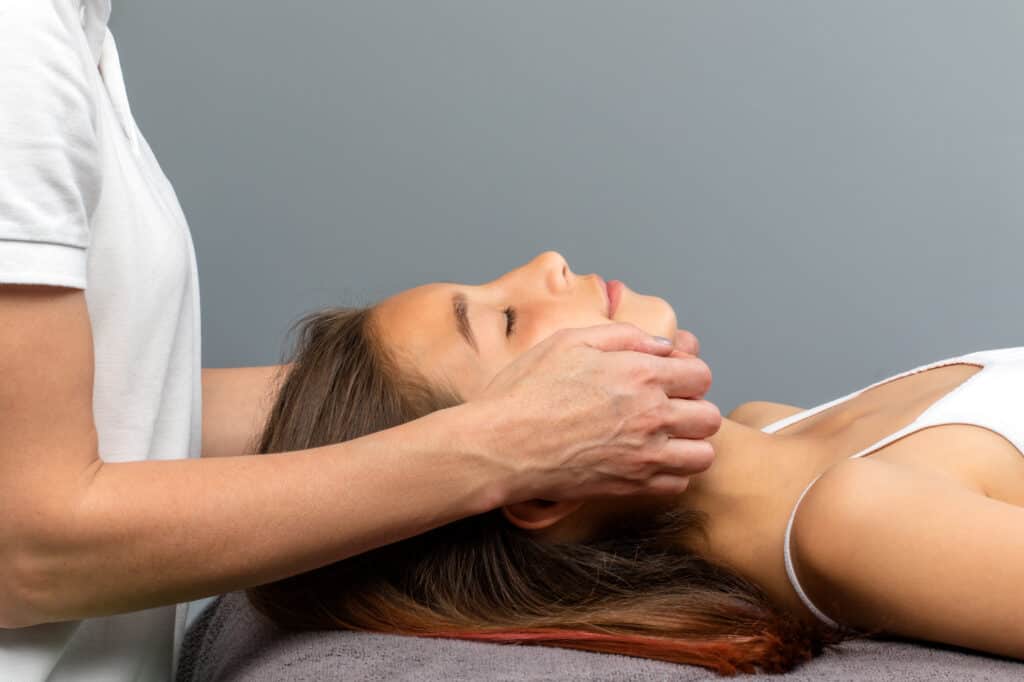
Trying relaxation techniques, improving your posture, and getting a regular massage might be enough if your symptoms are mild.
But if your symptoms are more severe, we urge you to book a consultation with us or your local physical therapist to investigate the root cause of your ear and jaw pain and get advice on the best treatment for you.
We can quickly evaluate your symptoms, identify the root cause, and get to work on a plan to fix it, and the best thing is? Your initial consultation is free. You can book yours here.
Dr. Jonathan Ruzicka is a Manual Therapist whose experience as a private therapist for professional athletes drove him to further his education attaining unparalleled skills in tissue mobility work, performance based rehab, injury prevention, myofacial release and joint mobilization to optimize human performance.
- 5 Lower Back Pain Stretches to Ease Your Discomfort - August 23, 2024
- How to Avoid Foot and Ankle Pain and Stay Active! - July 26, 2024
- Essential Stretches for Sciatica Pain: Your Path to Relief - June 10, 2024


